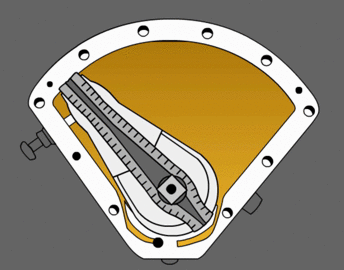 |
| One moving part. Simple. Elegant. |
According to Wikipedia, elegance is "a synonym for beauty that has come to acquire the additional connotations of unusual effectiveness and simplicity." In engineering terms, "a solution may be considered elegant if it uses a non-obvious method to produce a solution which is highly effective and simple. "
When you compare the mechanics of various other pneumatic valve actuators, such as rack and pinion or scotch yoke with their internal gears, bushings and bearings, you immediately understand that simplicity is sacrificed and the design is certainly not elegant.
 |
| Actuators with gears wear. |
When gears mesh, there is friction. Friction causes heat and wear, which effects the mechanical life of the actuator. Friction converts kinetic energy into thermal energy and can have dramatic consequences if left unchecked. Another important consequence of friction is wear, which may lead to performance degradation and/or damage to the internal components of a rack and pinion or scotch yoke actuator.
Backlash happens when gears change direction. It is caused by the gap between the trailing face of the driving tooth and the leading face of the tooth behind it. The gap must be closed before force can be transferred in the new direction, hence the phenomena of backlash. This is also sometimes referred to as "slop".
A well designed vane actuator uses a single piece of machined steel for both the vane body and drive shafts. With this design, the shaft and vane are not affected by backlash, friction or wear.
For more information, contact:
1085 Ohio Drive
Plano, Texas 75093
(972) 447-9443 phone
(972) 447-9720 fax
sales@kinetrolusa.com

